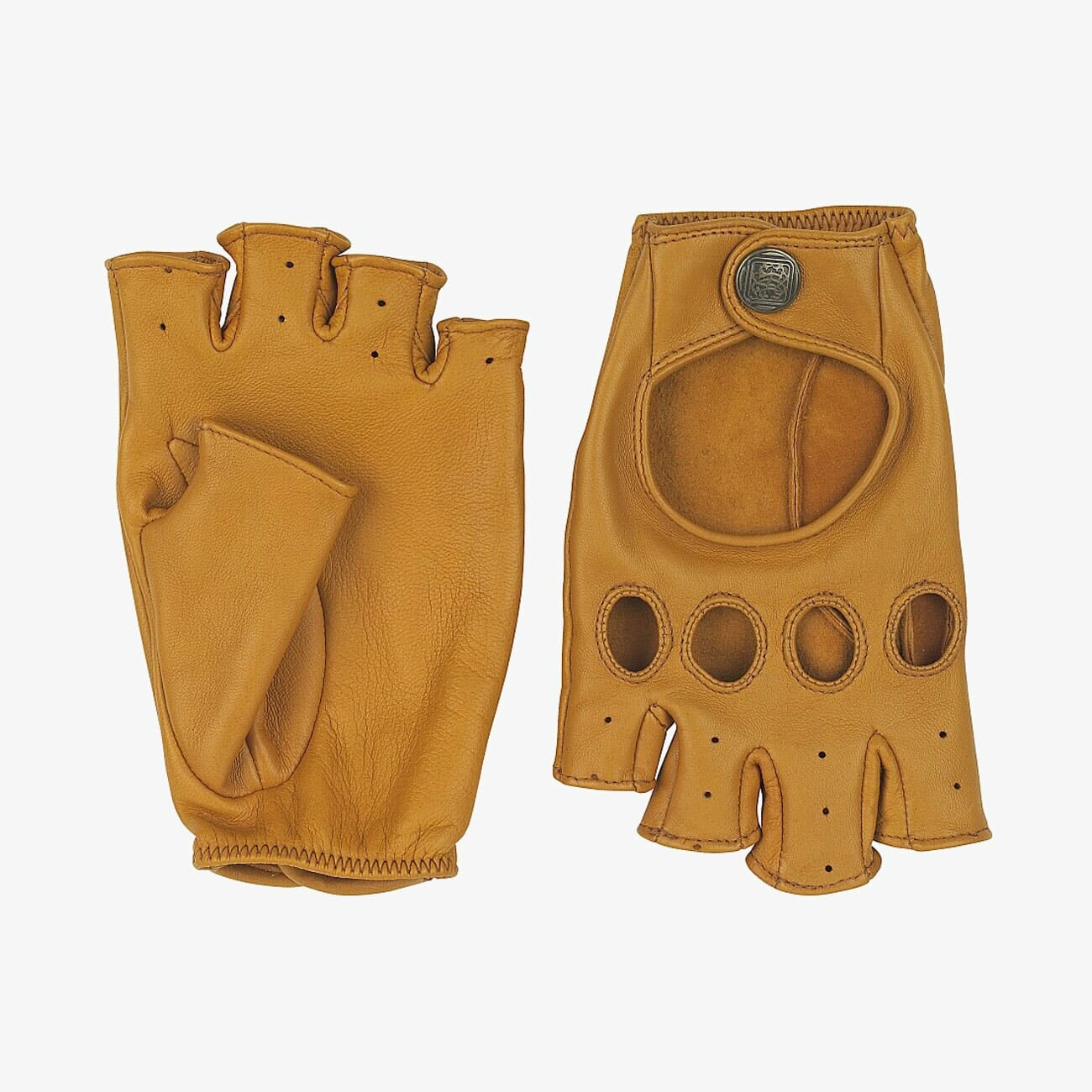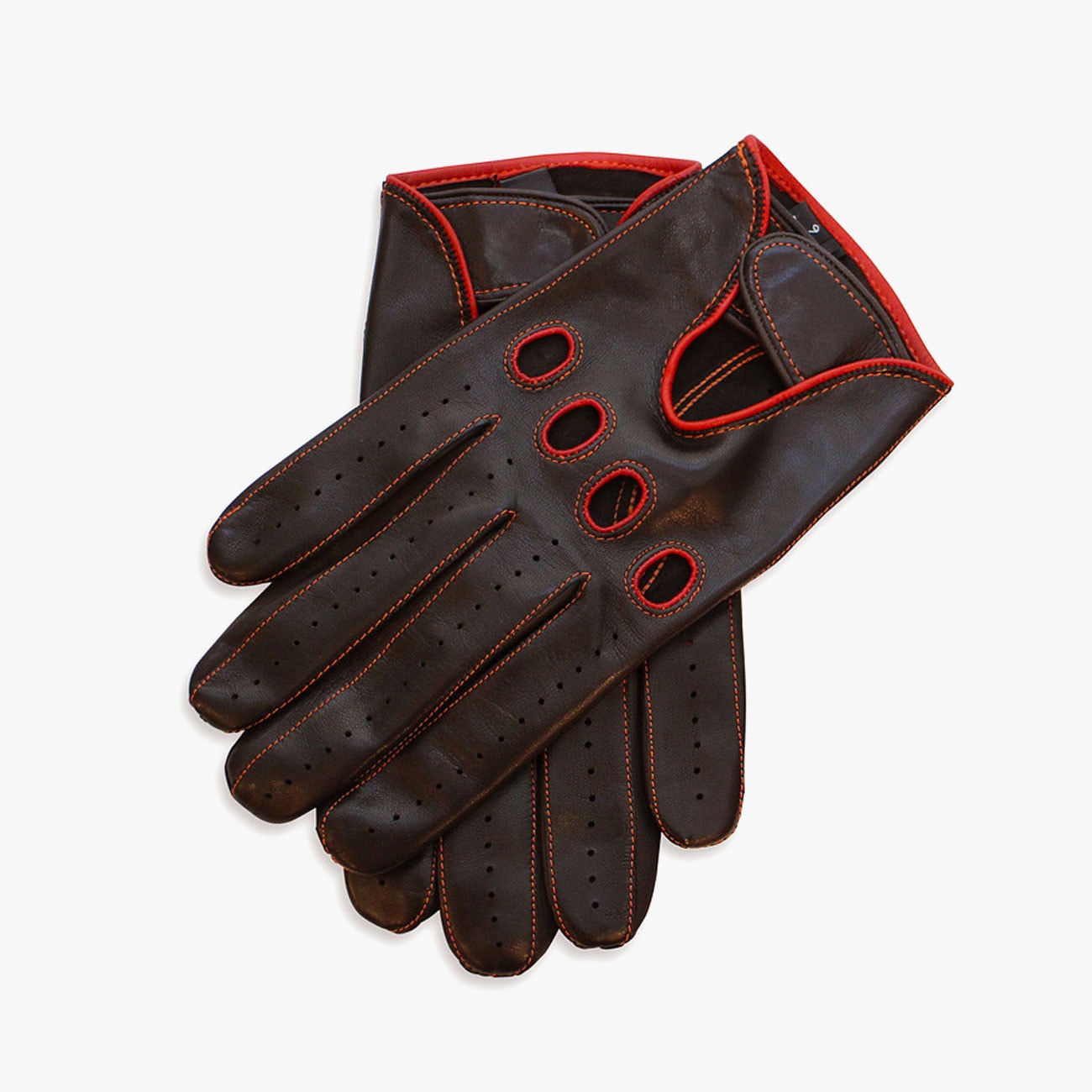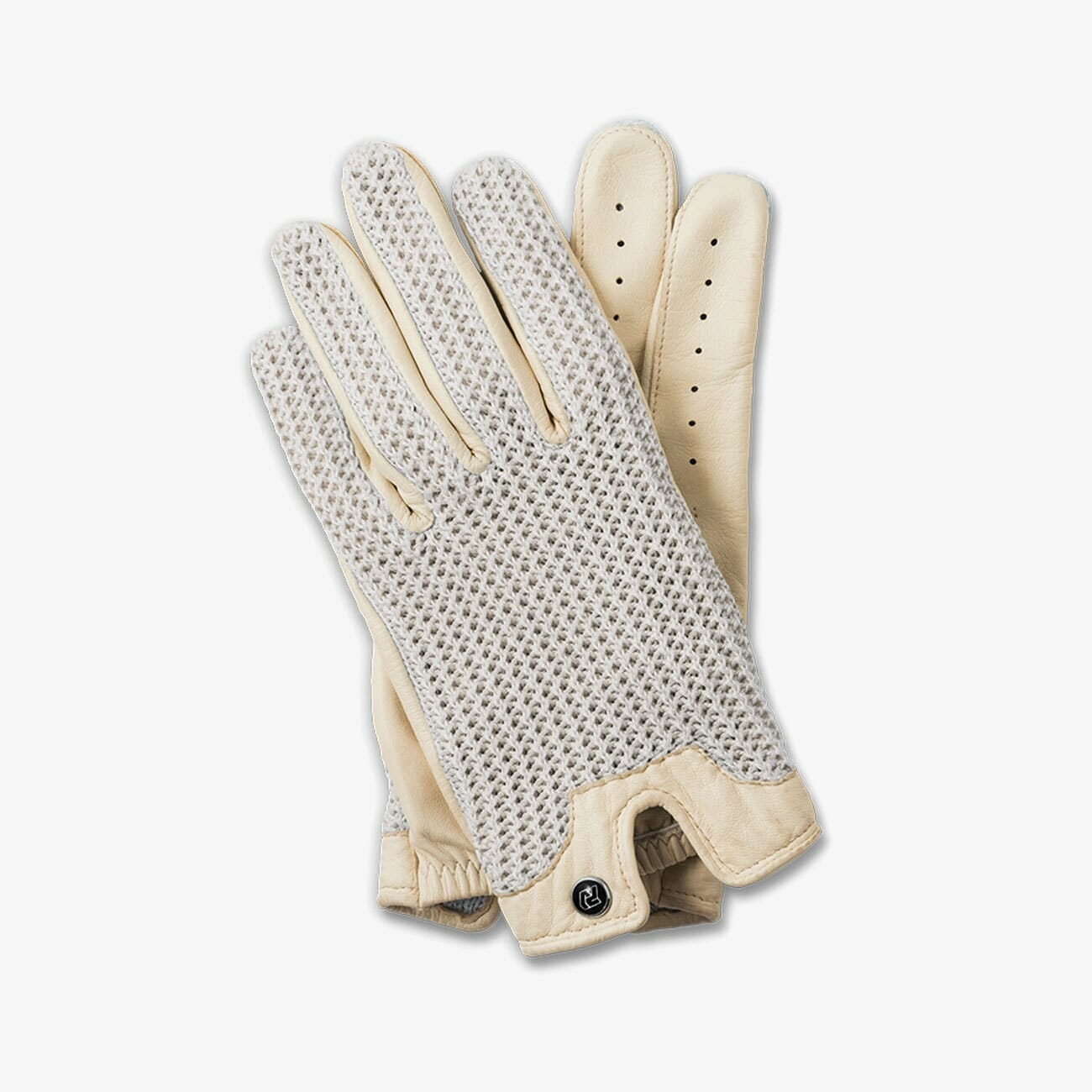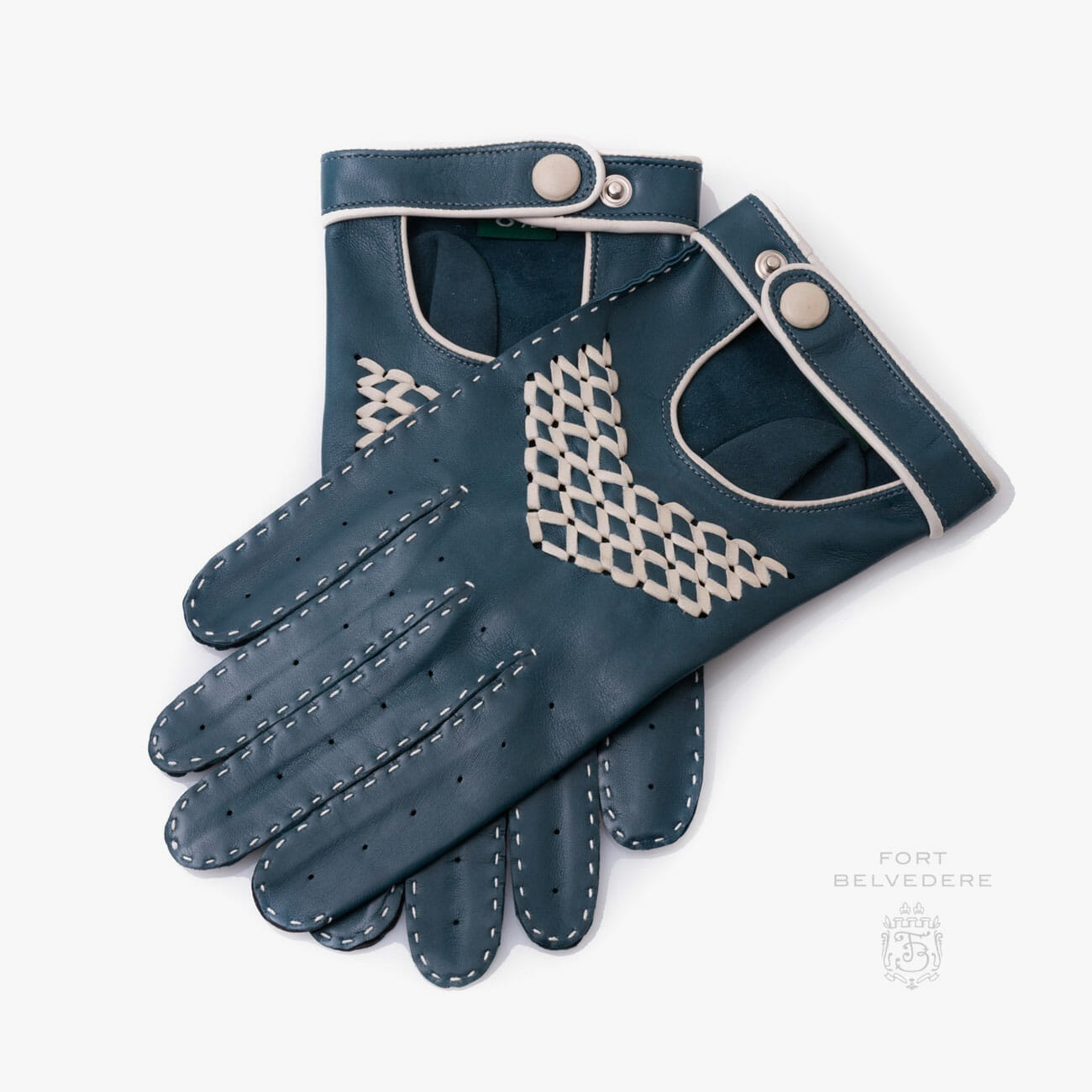When cars debuted in the 1890s, long-distance travel became more accessible to a wider audience, but the physical act of driving was no easy task. Roads were unpaved and cars lacked windshields and hardtops. Drivers were exposed to the weather and they needed specially designed clothes and accessories to make driving more comfortable and safe. Retailers quickly realized the monetary potential of this new apparel sector full of wealthy people. One advertiser wrote, “You may have perfectly good tires and lots of gas and oil… but if you are not comfortable yourself, you don’t enjoy riding.” Then they pushed their apparel: “you need proper motoring clothes” (The Clothier and Furnisher, ’63).
Proper motoring clothes consisted of heavy, waterproof coats, hats, boots, goggles and gloves. Imagine cranking a car to get it started, then gripping a metal steering wheel with no power steering in the winter. Drivers often traveled with two pairs of gloves, one for gripping the steering wheel and one for changing tires. They were essential to early drivers and started out looking much different than they do today. Since steering mechanisms and logistics were rather crude, gloves were made of thick leather, sometimes lined with wool, that reached all the way back to cover the cuff of your coat. (Think Robin Hood.) Once a driver was off the road, these gloves weren’t very practical, so they would leave them in the aptly named glove box.
During the 1930s, heating in cars began to effectively keep drivers and passengers warm. So the profile of the driving glove developed evolved into a more popular, tight-fitting and shorter shape made of thin leather. The gloves often featured extra stitching on the palms for enhanced grip and perforations to keep your hands from sweating. These features kept drivers comfortable and allowed them to use less grip strength when grasping the wheel. They also became a status symbol: you were considered high class if you had light-color gloves that were kept clean, which indicated you were able to afford a pair for work and one for presentation.
As heating systems became more efficient and the technology that was incorporated into cars improved, the popularity of driving gloves began to decline. Non-slip, rubberized steering wheels were easy to grip with bare hands and power steering meant the wheel was much easier to turn. Stylish men like Steve McQueen and characters like James Bond continued to wear driving gloves, so they stayed part of mainstream culture even though they were no longer needed for everyday driving.
Nowadays, driving gloves have been featured prominently in movies that focus on driving. The characters in Drive, Spectre and Baby Driver all wear driving gloves so they can operate their car with precision, sticking precisely to the wheel and gear shift. People who own vintage and racing cars are typically the demographic that wears gloves now.
Driving gloves today are typically unlined and made out of soft, grippy leather. They can be machined or hand sewn, with or without fingertips, with or without knuckle holes, in a wide range of colors and back styles. Below you’ll find the styles we like best.
Buying Guide
Chester Jefferies The Drive Gloves
Without fingertips, these gloves have an extra sporting look while still evoking the classic driving glove style.
Pickett London Men’s Leather Driving Gloves
The most traditional glove features open knuckles, an open back and perforated fingers to keep a driver’s hands from sweating.
Autodromo Stringback Driving Gloves
The stringback is a different way to maintain cool and dry hands. The short, split cuff on these allow you to show off your watch.
Fort Belvedere Driving Gloves in Lamb Nappa Leather
Handmade in Hungary, these gloves are more decorative with a contrasting arrow pattern, evoking the dynamics of speed.





